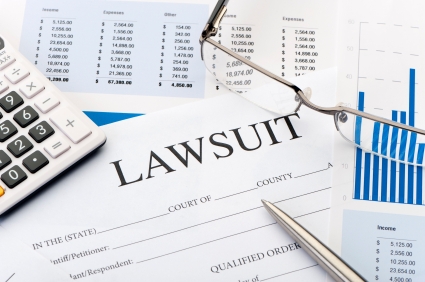Failure to make payments on your credit cards or personal loans can result in a creditor filing a lawsuit to collect on the money owed. After the creditor files the case in court, he will serve you with a copy of the summons and complaint. In California, the summons provides you information on the time frame that you have to respond to the lawsuit before a default judgment can be entered. In California, when you are served with a summons for money owed on credit cards or personal loans the typical time frame to respond is 30 days from date of service.
One of the biggest confusions that I encounter with clients is that they assume that a court date has been set and that they do not have to respond the lawsuit within the 30 day period. The confusion stems from notice that is attached to the summons and complaint that provides a date and typically states: YOU ARE HEREBY ORDERED TO PERSONALLY APPEAR IN DEPARTMENT “LOCATION’, OF THIS COURT ON “DATE” AT “TIME”, FOR A: HEARING RE: ORDER TO SHOW CAUSE WHY SANCTIONS SHOULD NOT BE ISSUED AGAINST PLAINTIFF FOR FAILURE TO FILE DEFAULT JUDGMENT PURSUANT TO CRC 3.740
If you are unfamiliar with the legal language in the summons and complaint, you may assume that the above indicates that you are to appear on the specified date to deal with the issue of the lawsuit. This date is not the date that you have to respond to the lawsuit and take action. The summons provides you with the instructions on how many days you have to respond to your lawsuit and in what form. Typically the time frame to respond to a civil lawsuit for credit card debt or money loaned is 30 days from the date of service. Many people read the above statement and assume that they do not have to deal with the lawsuit until the date that is stated for the Hearing for Order to Show Cause. In California, you have typically 30 days from the date of service to respond to the lawsuit, and if you fail to respond the other party can obtain a default judgment against you.
Often it comes as a surprise for many when they realize their wages are about to be garnished or there is a levy on a bank account for a lawsuit they assumed they did not have to respond to yet. Failing to respond within the time specified in the summons can result in a default judgment being entered. The judgment is what allows creditors in California to move forward with garnishing your wages, levying a bank account, or putting a lien on your property.
The date that is listed on the Order to Show Cause is actually a date set for the plaintiff in the case which is the person who has filed a lawsuit against you. This plaintiff is to explain on that date why he has not moved the case forward by obtaining a default judgment against you, if you have not responded to the lawsuit. The courts want to move cases along and therefore have set a future date to address the case if the plaintiff has failed to move the case along.
You can respond to the lawsuit with filing an answer to the complaint or you can consult with a California bankruptcy attorney to determine if filing for bankruptcy is the right option in your situation. Filing for bankruptcy can stop any pending lawsuit from proceeding any further and can also stop any pending wage garnishment or levy on a bank account.

